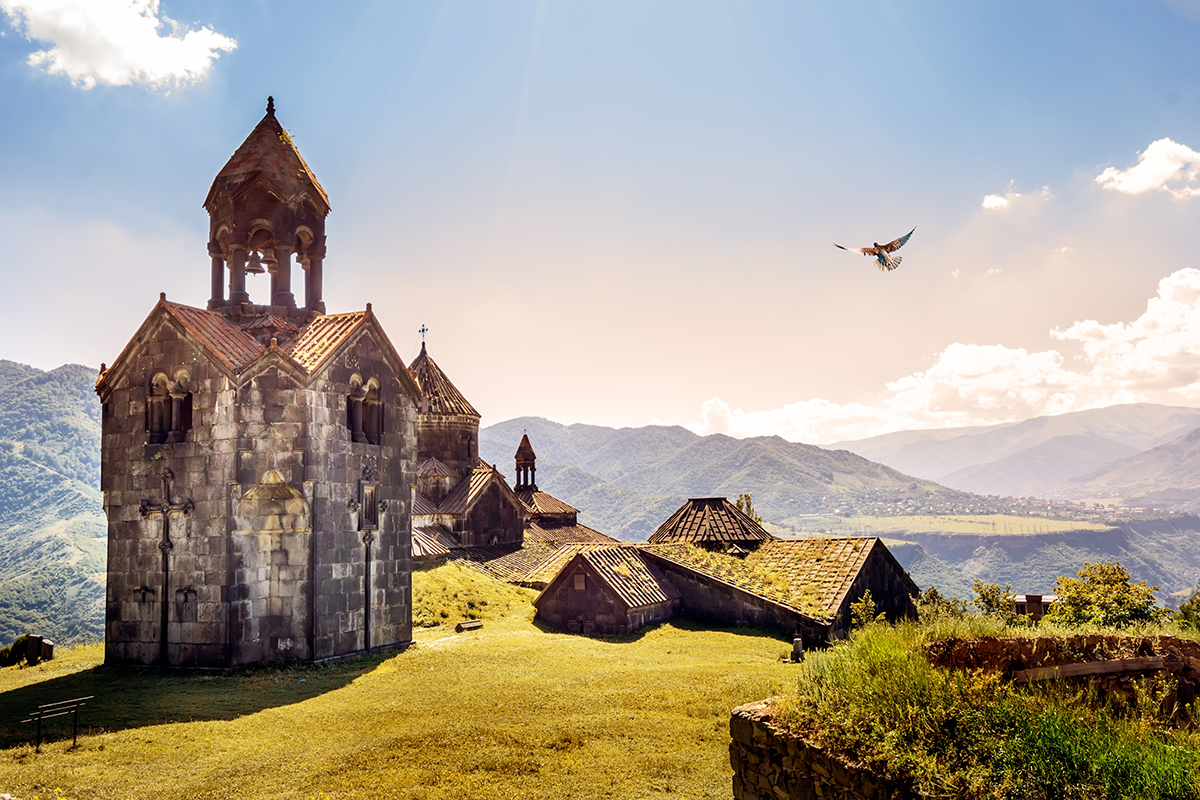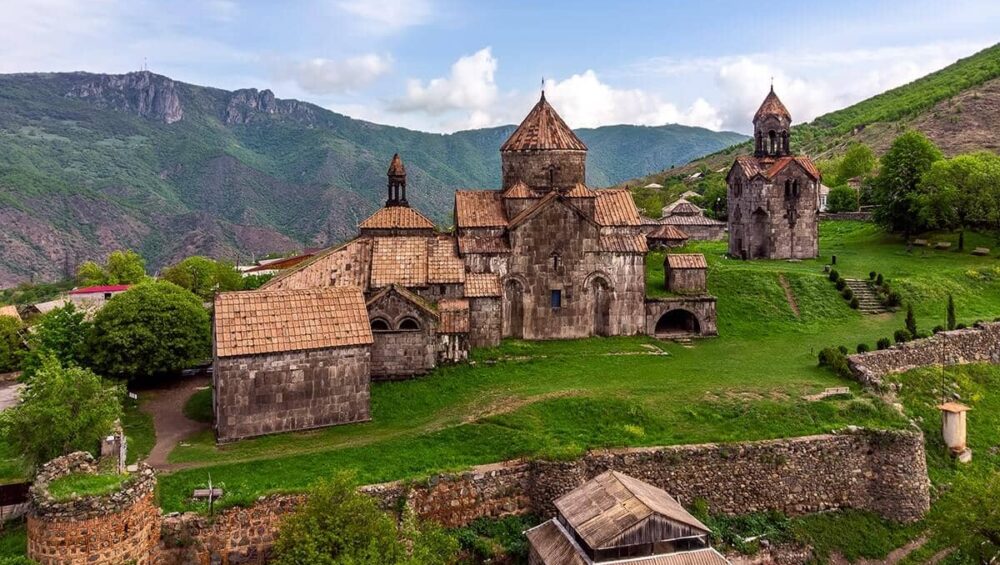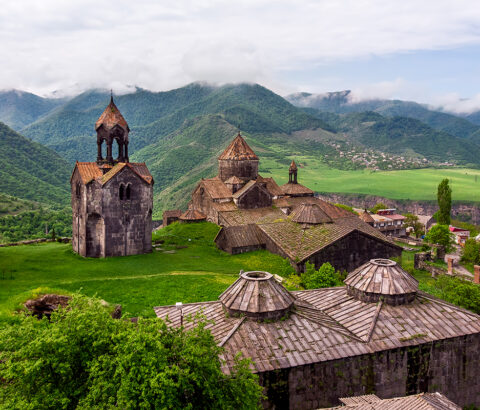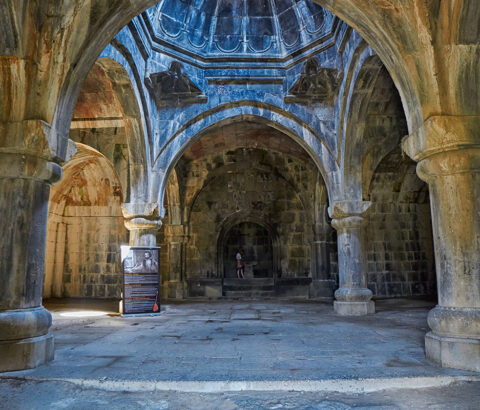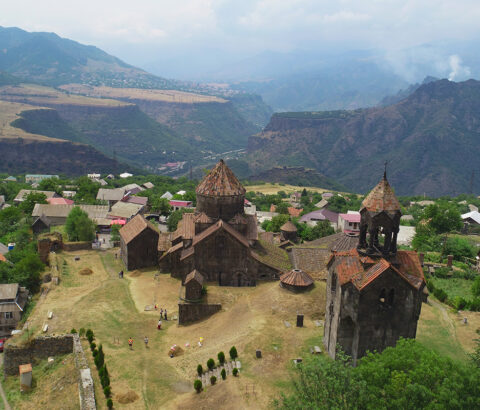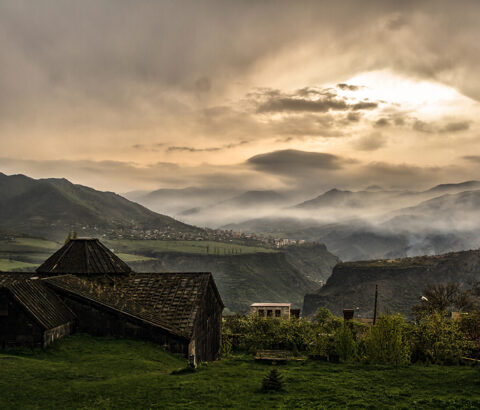A masterpiece of Armenian religious architecture, the UNESCO World Heritage site Haghpat monastery represents a unique fusion of traditional architecture of the region and the ecclesiastical architecture of the Byzantine Empire. The monastery was founded in 976 AD by King Ashot the Merciful and his wife Queen Khosrovanush who commissioned the construction of the oldest church of the complex, St. Nshan (Holy Sign), in honor of their sons Smbat and Kiurike.
Local lore has it that Haghpat owes its name to the quarrel between a father and son during the construction of the nearby Sanahin monastery. One of the princes of Sanahin invited a renowned master to build a monastery. The master had brought his son with him, but as the construction of the monastery commenced, a conflict arose between them. The son abandoned his father and left Sanahin.
On the way, he crossed paths with another prince who hired him to build another monastery. As he carried on with the construction, his father’s apprentices noticed the walls rising on the opposite mountain. The old master decided to visit the construction site. He examined the walls carefully and proclaimed: “Akh pat” (strong wall). Thus, the monastery became known as Haghpat. Another legend claims that “haghpat” means “hater of evil,” explaining that in a place where a monastery, a sacred place, is built there can be no evil.
 Quick Info
Quick Info
What's Nearby
Today, the monastery of Haghpat consists of the St. Nshan church and its narthex, the church of St. Gregory (built in 1023-1025), the church of Mother Mary (erected in 1208-1220), a sepulcher, an 11th-century book depository, a belfry built in 1245, and a refectory that could accommodate about 270 monks.
The entire complex is surrounded by defensive walls dating back to 10th-11th centuries. A major religious, cultural, scientific, and educational center of medieval Armenia, Haghpat monastery was renowned for the manuscripts and miniatures created here.
Many famous scholars taught at the Haghpat monastery, including Grigor Magistros, a linguist and philosopher, and Hovhannes Sargavan who reformed the Armenian calendar and authored a number of scientific works on mathematics, theology, medicine, etc. In its golden age, there were over 500 monks at the monastery.
Haghpat was also known for its large collection of works written in Armenian language, becoming the first Armenian Matenadaran, library of manuscripts.
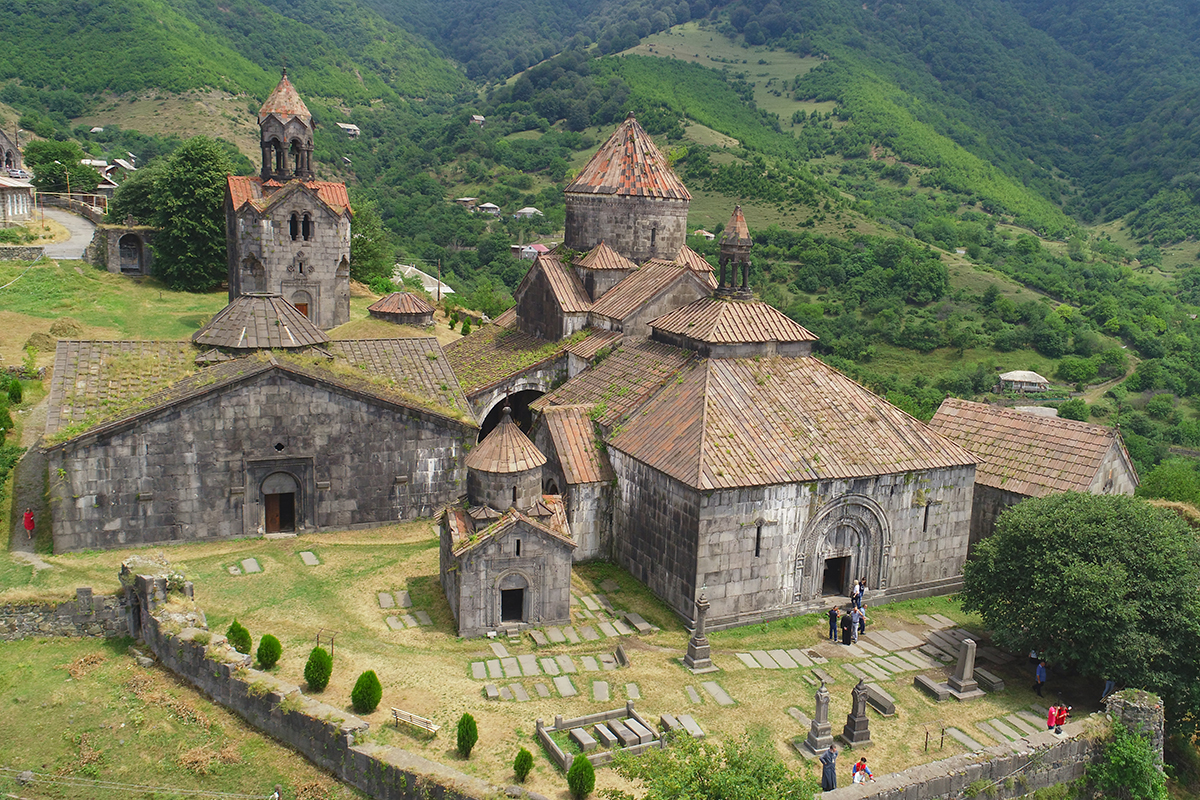
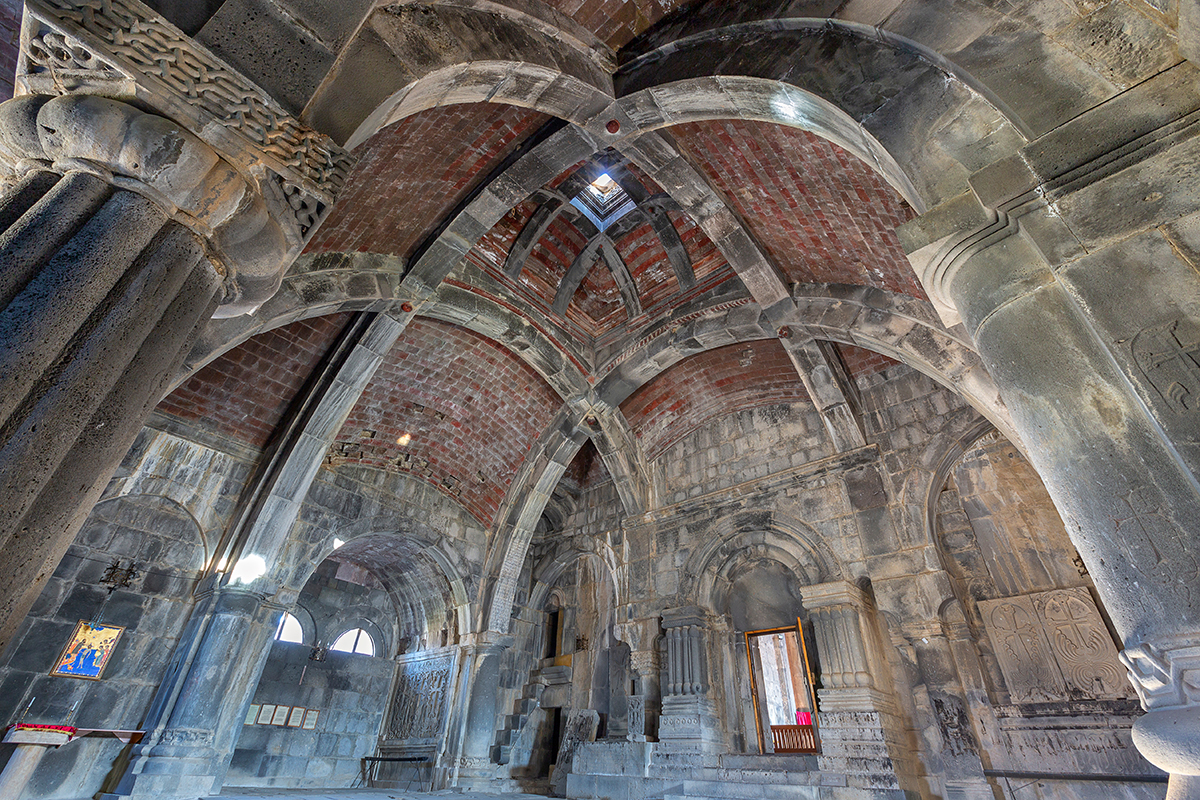
Art and culture in Armenia in the beginning of the 13th century were rapidly developing. It was mainly a result of the peaceful period that came with the liberation of Armenia from the Seljuk Turks in the late 12th century by the Zakarian princes. Many new manuscripts and illustrated gospels were created during this period, one of the prominent examples being the Haghpat Gospel.
It was created in 1211 AD in Haghpat monastery and later illustrated in the city of Ani by the painter Margare. What makes this gospel special is the unique style of its illustrations and miniatures. Along with the strict traditions of gospel illustrations of medieval Armenia, Haghpat Gospel features personal, everyday life, secular scenes of men and women in traditional dressings, priests, representatives of both the upper and lower classes.
Today, this gospel is displayed at the Matenadaran museum of ancient manuscripts in Yerevan.
Another unique treasure of the Haghpat monastery is the Amenaprkich (All Savior) khachkar created in 1273 by a master called Vahram. Very few khachkars of this style have survived in Armenia. The central object of the khachkar is a beautifully carved cross in the center of the stone. Contrary to the more common cross-stones, All Savior khachkars depict the scene of crucifixion.
The elaborately carved All Savior cross-stone of Haghpat depicts Jesus on the cross, Mother Mary and Mary Magdalene, the 12 apostles of Christ, and figures of angels. The surface of the khachkar is colored with “vordan karmir,” a red dye made of an insect called Armenian cochineal. Another All Savior khachkar created by master Vahram can be found at the old cemetery of the village of Dsegh.
In 1996, the monastery of Haghpat and the nearby Sanahin monastery were included in the UNESCO World Heritage list as masterpieces of religious architecture and major education centers in the Middle Ages.
